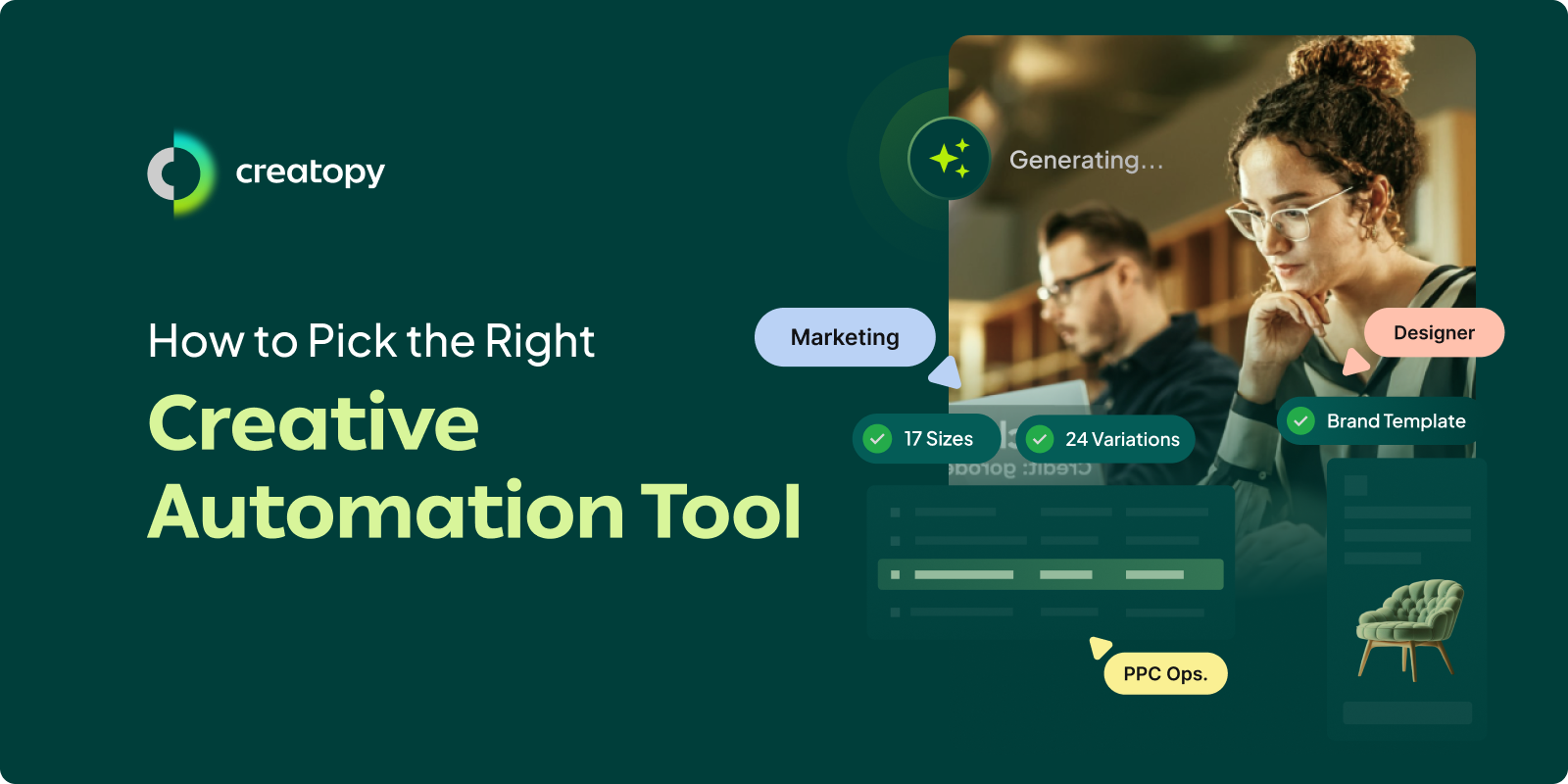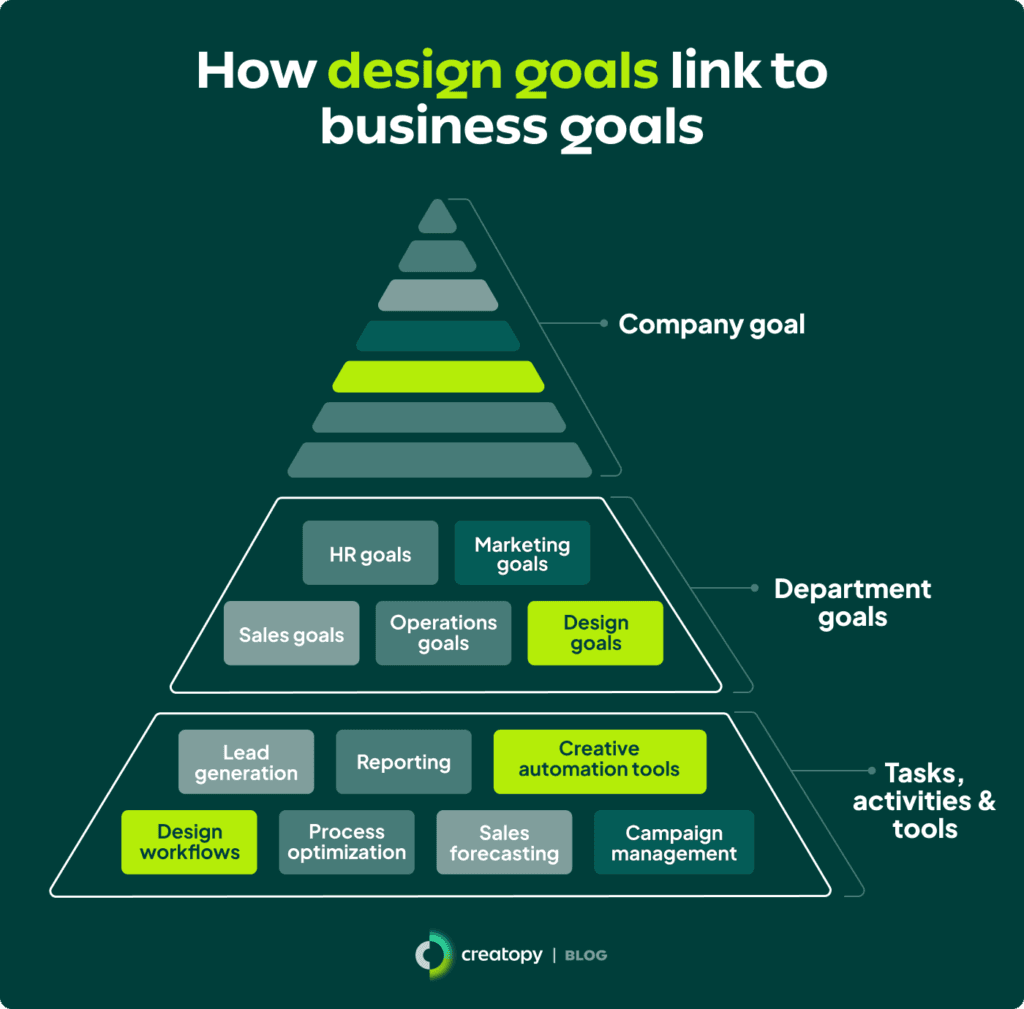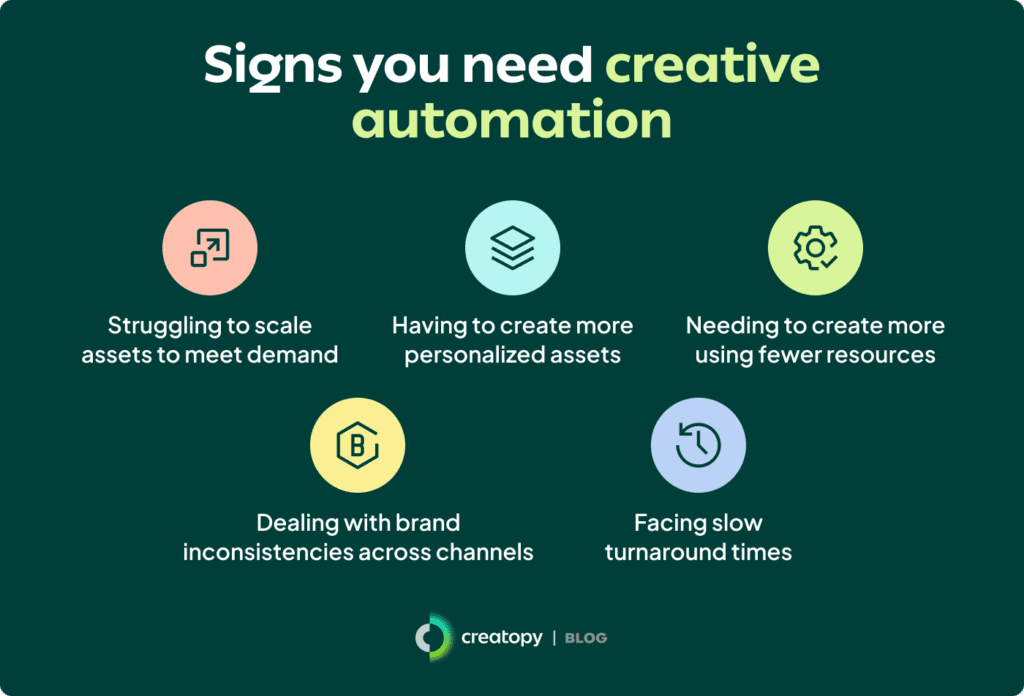Introducing Predictive Scoring, Edit with Prompt, and AI-Powered Resize
The Brief Team
Jul 8, 2025 - 4 min read
Are you an agency? Scale your team's work and impact with The Agency Package.

Picking the right creative automation tool isn’t a choice you should take lightly. If you choose an unsuitable tool, you might end up disrupting creative workflows with no added benefit, eventually having to revert back to old processes.
However, this shouldn’t scare you off from adopting creative automation altogether, as it could cost you in the long run.
To help you avoid rash or delayed decisions, we’ll outline the key factors you should consider as you browse different creative automation tools.
But before we do so, here's a quick reminder on the ‘why’ behind creative automation.
Creative automation tools help you create, optimize, launch, and refine creative assets. Powered by AI and automation, they can ramp up the speed of creation for all sorts of assets without compromising on quality. Think ad copy, banners, posters, music, and videos, among many others.
While many fear automation and AI in creative spaces, creative automation tools aren’t here to replace human creativity. Quite the opposite. They help creativity flourish by stripping creative workflows of mindless and monotonous tasks such as resizing ads, generating multiple format variations, or keeping branded elements consistent. Removing these mind-numbing aspects improves job satisfaction and can save teams over 40% of bandwidth.
See more ways creative automation trumps traditional design.
At a high level, the process of picking a creative automation tool is two-fold: conducting an internal business assessment and evaluating creative automation tools.
First, you must remind yourself of your needs and goals. These pave the way for your decision-making. This process involves clarifying your:
After clarifying what you’re looking for and where you want to go, it’s time to look for a tool that helps you get there. To do so, assess each tool’s:

Additional reading: The 9 Best Creative Automation Tools in 2025
We’ll break down each component to highlight what makes them essential when choosing a creative automation tool.
Start by highlighting your design goals using KPIs, OKRs, or SMART goals. Keep these in mind, assessing each creative automation tool from the lens of, “Will this tool help me achieve my creative goals?”
Once you’ve clarified your design goals, see how—or if—they link to company-wide goals. This may feel like a stretch, but you may struggle to convince decision-makers to purchase if a creative automation tool only serves lower-level goals without contributing to broader objectives.

Think of the types of creative assets you need to help you reach your goals. Be clear on their format, platform suitability, volume, branded elements, and personalization needs. This directs your search to suitable creative automation tools.
Take a critical look at your creative workflows and pinpoint where and how your design process falls short. Get in the weeds by asking team members about their experience. Being aware of these hurdles allows for more calculated decisions: You’ll search for a creative automation tool that not only helps you reach your goals but also solves existing issues.

Consider the end user of the creative automation platform. Think of whether you want to limit its use to skilled designers or if you want employees who aren’t too design savvy to be able to jump in and create assets as well. This dictates the complexity of your chosen creative automation tool. It also gives you a better idea of how many users will need access to the platform, which impacts cost.
A clear budget helps you distinguish between viable and no-go creative automation tools. It’s also useful during negotiations with vendors. In some cases, it enables you to agree on a custom price by discerning must-have features from nice-to-have ones.
Once you’ve clarified where you stand and what you’re looking for, you can move on to assess the different creative automation tools in the market.
If tools are a struggle to understand, users are less willing to give them a chance. This creates resistance to change. Therefore, you must involve end users' feedback as you evaluate different creative automation tools.
Here are some questions to ask to determine the tool’s intuitiveness:
Take a close look at what features each creative automation tool offers. See whether these support your business considerations—goals, needs, roadblocks, and end-user capabilities.
As each tool spans a range of features, here are some angles to consider:
Read more on how The Brief helps you stay on-brand across channels.
Your creative automation tool should easily fit into your workflow—you shouldn’t have to completely upend your creative process to accommodate it. This is possible with the right integrations.
To better grasp a tool’s integration capabilities, ask:

Whether you’re a start-up bursting with growth potential or an enterprise with ambitious goals, your creative automation tool should scale with you. Part of this may involve empowering non-designers to create branded designs as well.
For a better idea of the platforms’ scalability, ask the following questions:
Creative fatigue is real. Starting new designs from scratch every time is nearly impossible. Sometimes, you need a helping hand from in-platform banner templates or asset libraries.
To determine the quality of a tool’s library, ask:
Quick customer support can limit the impact of software bugs, technical issues, and errors. Without timely support, your creative workflow might come to a standstill, burdened by inefficiencies.
Here are some questions you can ask to determine the level of a creative automation tool’s customer support:
Look to real-life users for a more accurate take on each creative automation tool. Comb through vendors’ websites and review platforms like G2 to better understand who uses what platform and what they think of it.
As you do so, ask yourself:

Creative automation tools differ in their pricing models. However, the most popular are per-seat and tiered pricing, where each level offers different features.
When calculating the overall price of each creative automation tool, consider:
Want to keep these questions on hand? Download your free question bank below.

Now that you’re equipped with the business and tool considerations to keep in mind as you choose a creative automation tool, you can start assessing your options. And what better time to start than now?
If you want to explore The Brief’s features and put your checklist to the test, get started with The Brief’s free trial right away.
7 days free on us
Let's put these insights into action. Build, scale, and automate campaigns with AI-powered workflows.
The Brief Team
Jul 8, 2025 - 4 min read
Derya Yildirim
Feb 21, 2025 - 7 min read